
Crossing the Bridge with President Clinton

“The 35th Bridge Crossing Jubilee in Selma”
Text By Thomas H. Wilson
Photos by Thomas Wilson, Ted Whisenhunt & Sandy Jones
The attempt to integrate Central High School in Little Rock, Arkansas, in the early 1960s ushered me into the real world of social conflict. This was before the March in Selma called “Bloody Sunday.” I had a good life as a young boy in Camden, Arkansas. I was barely aware of the two worlds of people that occupied that rural town. I didn’t realize that people were being hurt and that I was part of the problem.
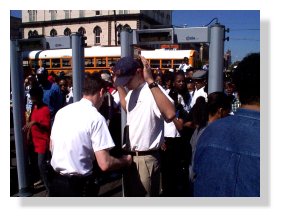 |
 |
I didn’t pay much attention to the happenings at Lincoln High School on the other side of town. I loved to peek through the fence and watch their band put on a wonderful halftime show at their high school football games. I remember segregation in the South. I saw the “colored” signs over drinking fountains in the J. C. Penny’s store. I saw separate seating in the bus station.
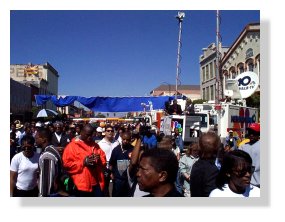 |
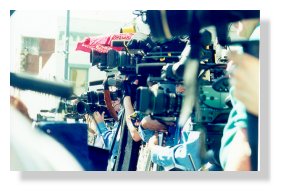 |
I grew up with Orville Faubus as my governor. Governor Faubus put George Wallace in the shade when it came to segregation. It took the 1965 March in Selma and the behavior of Governor Wallace to wake me up about the human situation in America and to cause me to suffer the guilt of the past.
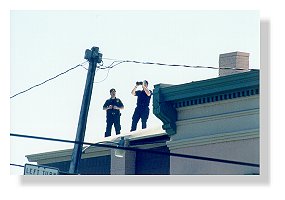 |
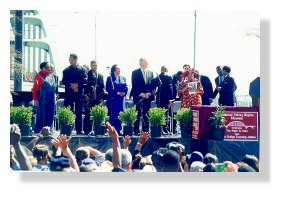 |
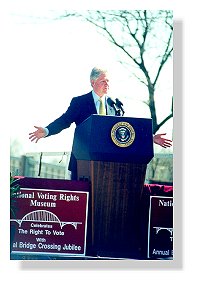 |
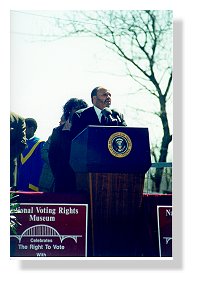 |
I went to see the important black political leaders and to hear their stories. I went from Marion to Selma just as they did 35 years ago. I went for Jimmy Lee Jackson. I went to watch the crowd, to see the media, to see security officers on the roofs, to feel the emotion, to be part of a significant social happening. I was not disappointed.
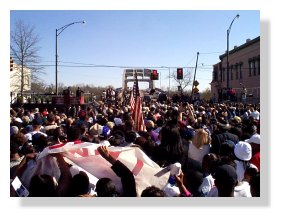
|
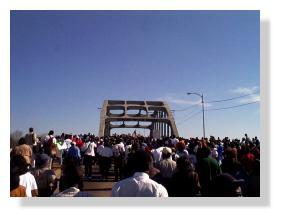 |
Ted Whisenhunt and I left Marion at 8:00 am on Sunday morning, to attend the “Bridge Crossing Jubilee” and see President Clinton. Several hundred people were already standing in front of metal barricades along Alabama Avenue. Secret Service officers informed the growing crowd that it would be an hour before the metal detectors were in place and for us to back up and relax. I watched a heavily uniformed Selma policeman walk by with a German Shepherd on a leash. Could it happen again? It would be a long six hours before we saw the President.
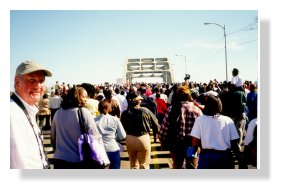 |
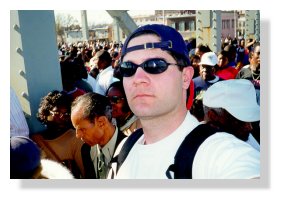 |
The sun was bright, too bright, and the crowd was getting big. We finally were funneled through the metal detectors and scanned for hidden weapons. Now came the really long and demanding wait. I enjoyed meeting and watching many different and excited people. I heard stories of the first bridge crossing. It was a happy, proud, and polite gathering of people.
I felt out-of-place but welcomed. I was glad to be tall as people pushed and packed themselves into a mass of humanity. The short people around me were being squashed … finding it hard to breathe … and they couldn’t see what was happening. I gave my folding stool to an elderly lady and my peanutbutter crackers to a little girl. I also hunkered down occasionally so the people behind me could see. I didn’t want to be part of their problems on this day. Many people couldn’t take the conditions. After several hours of waiting, scores of people pulled out and went home…some were carried out on gurneys.
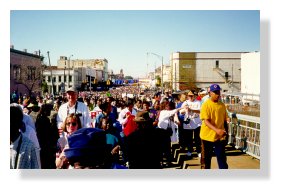
|
 |
Several choirs, soloists and speakers occupied the long wait for the President. Most of the black political leaders were present and they reminded us that the “March” was to give minorities the right to vote. It was interesting to see the famous people that are involved in the black effort for equality. U.S. Representative John Lewis was one of the speakers. He told of being at Bloody Sunday. He described in emotional tones the moments leading to the clash with State troopers. He told what it was like to taste fear and smell death. He had his skull fractured by a trooper’s baton.
Many of the speakers were concerned with the upcoming national census. They pleaded with the crowd to think of themselves as being black people ... to check the box indicating black rather than mixed race. The term African-American was never mentioned by any speaker.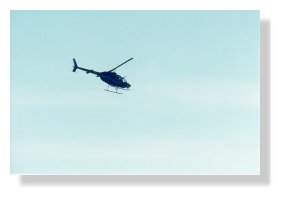 |
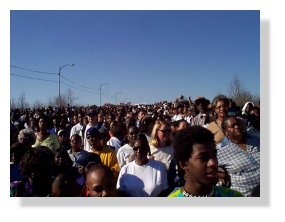 |
Black people love President Clinton, even more than they loved JFK, Lyndon Johnson, or Jimmy Carter, and they did love these white men! I have never seen such a genuine outpouring of respect and admiration for a white person by blacks as I witnessed toward President Clinton on that Sunday afternoon.
The President’s speech reminded me of speeches given by Martin Luther King, Jr. The President mentioned numerous bridges still to be crossed. And then we marched. People filled downtown Selma from Jefferson Davis Avenue to the Edmund Pettus Bridge and over to the new Civil Rights Monument on the Montgomery side of the bridge. A river of people slowly walked, sang and savored their moment in history.
I am glad that I went to Selma for the Bridge Crossing Jubilee. It was strange but good to hear Marion mentioned by so many of the speakers, including the President. I wonder how things are back in Camden, Arkansas.